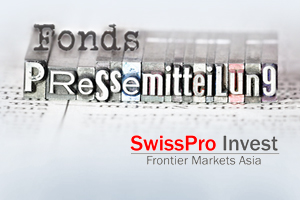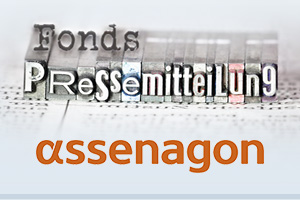 SwissPro | Frankfurt, 11.04.2016
SwissPro | Frankfurt, 11.04.2016
The Asian Development Bank (ADB) has listed many policy challenges facing the Bangladesh economy thought it has kept the growth projection unchanged at 6.7 percent for the current fiscal year. Government employees’ pay hike has spurred consumption and steady readymade garment exports helped out the economy. However, the ADB painted a grim picture of the remittance front that feeds the economy substantially. The multilateral financier had earlier in September projected the same figure of growth for the current fiscal year 2015-16. The Asian bank sees many policy challenges in Bangladesh, like boosting investment and creating enabling business environment which are vital for stimulating growth to break the six-plus cycle. The country could significantly expand its potential output through infrastructure and human capital development.
BoP surplus widens 58 percent
The balance of payments surplus widened about 58 percent in the first seven months of the fiscal year from a year earlier on the back of less spending on petroleum and reduced trade credit for imports. At the end of January, the overall surplus stood at USD 2.7 billing in contrast of USD 1.7 billion a year earlier. The surplus increased mainly due to slower growth in import compared to exports in the first seven months of fiscal 2015-16. In the same period, exports grew 7.11 percent and imports 6.73 percent. Bangladesh spends a large sum on petroleum imports every year. But this fiscal year, petroleum imports dropped almost 30 percent year-on-year in the first seven months. Another cause for the slowing import is the continued sluggish trend in the manufacturing sector, as reflected in raw material imports, which increased only 2 percent during the period.
FDI crosses $2.0b level for first time in country
The annual inflow of foreign direct investment (FDI) crossed the $2.0 billion level for the first time in Bangladesh last year. Updated statistics on FDI, released by the central bank, showed that the net inflow of FDI stood at $2.23 billion in 2015. The amount was 44.10 percent higher than the FDI worth $1.55 billion in 2014. The provisional estimation of FDI last month, however, showed that the net inflow of FDI was $1.89 billion in 2015. Bangladesh Bank now comes with revised statistics giving details of the annual FDI inflow. It also shows that gross inflow of FDI stood at $2.69 billion last year and the amount of disinvestment $463.66 million. Disinvestment generally means withdrawal of investment. Net inflow is, thus, calculated by deducting the disinvestment from the gross amount of inflow.
Bangladesh gets $217m from World Bank to upgrade power plant
The government yesterday signed a $217 million financing agreement with the World Bank to upgrade Ghorasal power station, more than doubling the generation capacity of one of its units. A repowering project will transform a gas-fired steam unit, which is currently generating 170 megawatts, into an energy-efficient 409MW plant. Such a conversion to combined cycle technology will increase the plant’s overall efficiency from an existing 30 percent to 54 percent while requiring only 18 percent more natural gas, the WB said in a statement.
Bangladesh Bank finds macroeconomic outlook impressive
The central bank sees country’s macroeconomic outlook for this fiscal year (FY) “impressive” for some major boosters. Increased domestic demand, prospective food production and a stable political situation helped a great deal in the turnaround, says an account given by the Bangladesh Bank. “If this trend continues, 7.0 percent economic growth and 6.20 percent inflation seem quite achievable” the Bangladesh Bank said in its latest quarterly report. According to the Bangladesh Bank Quarterly (BBQ) for October-December 2015, the economy has gained such momentum despite a moderate pace of global economic recovery.
Manufacturing output posts 13.4 percent growth
Output of the country’s large and medium-scale manufacturing industries registered a robust 13.4 percent growth last year. The Quantum Index of Medium and Large-Scale Manufacturing Industry showed that the average index of manufacturing output in 2015 stood at 251.44 while the index was 221.78 in 2014. Thus manufacturing output grew by 13.4 percent in the year under review. When considered for the current fiscal year 2015-16 (FY16), it released index showed only six-month data of industrial output when nine and a half months of the FY’16 has already been passed mainly due to delayed calculation. According to the statistics, the average index in July-December period of FY16 stood at 255.28 while the index for the same period of FY15 was 230.13.
Private sector credit growth soars to 15.11 percent in February
The country’s private sector credit growth posted a steep climb of 15.11 percent in February, exceeding even the 14.80 percent growth ceiling set for June 2016 in the monetary policy statement for January-June of the current year. The growth spike is attributed to banks handing out large amounts of consumer and farm loans at low interest rates to ensure their profitability. The private sector credit growth in January this year also surpassed the 14.19 percent three year-high achieved in December 2015, rising to 14.82 percent. Overburdened with excess liquidity, most of the banks are now paying out consumer loans at 12.50 to 14 percent interest rate.
Have a successful day and best regards
Christian Forthuber
Managing Director
SwissPro Invest (BD) Ltd.
Walther-von-Cronberg-Platz 13
60594 Frankfurt, Germany
Direct: +49 69 380 97 52 97
cforthuber@swissproinvest.com
www.frontier-markets-asia.com



